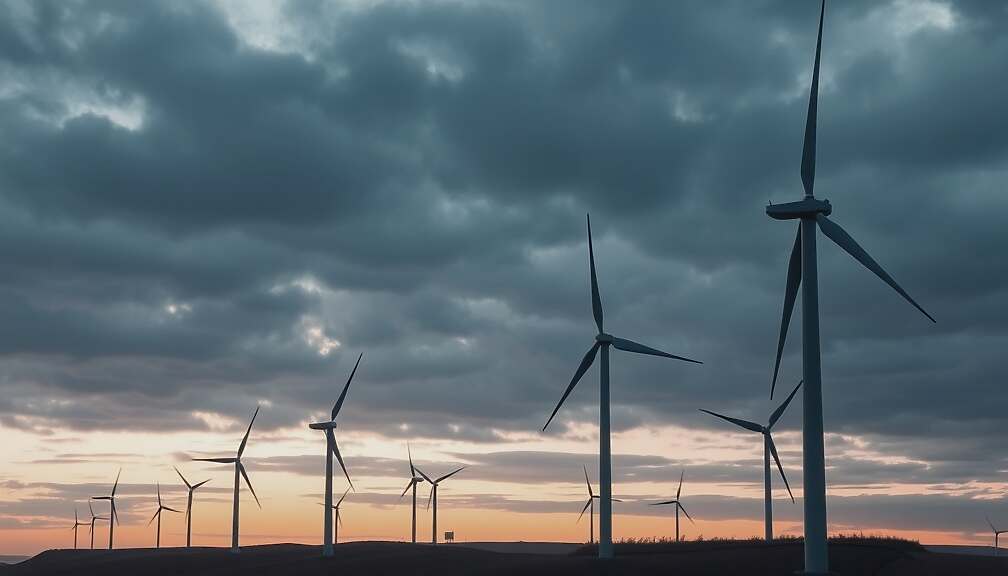Renewable energy sources accounted for 54 percent of Germany’s gross electricity consumption during the first half of 2025, despite unusually calm weather conditions throughout the winter and spring months. Approximately 142 terawatt-hours (TWh) of electricity were generated from renewable sources – a five percent decrease compared to the 149 TWh produced during the same period last year, according to a recent assessment by the Federal Environment Agency (UBA).
“The weather-related decline in renewable electricity generation underscores the importance of diversification” stated UBA President Dirk Messner. “Only through a consistent and accelerated expansion of renewable energies across all sectors, coupled with a robust power grid and sufficient storage infrastructure, can a climate-friendly energy system be achieved. We owe our past successes in emission reduction primarily to the steady expansion of renewable energies – we must continue on this path decisively.
Notably, the months of February to April, typically characterized by strong winds, experienced unusually weak wind conditions. According to the German Weather Service (DWD), March 2025 was the calmest March on record since measurements began in 1950. Simultaneously, electricity production from hydropower also suffered due to extended dry weather conditions.
While wind power generation decreased by 18 percent and hydropower generation fell by 29 percent, photovoltaic (PV) generation increased by 27 percent, benefiting from favorable solar irradiation and continued strong installation rates. Wind energy maintained the largest share of renewable electricity production at approximately 43 percent, followed by PV (34 percent), biomass (17 percent) and hydropower (6 percent).
Electricity demand remained roughly equivalent to the levels observed in the first half of the previous year. The reduced renewable electricity generation, attributed to weather patterns, resulted in a slight decrease in the share of renewable energies in gross electricity consumption, although it still reached around 54 percent.
Expansion of renewable electricity generation capacity continues to be dominated by PV installations. The first two quarters of 2025 saw a net increase of 7 gigawatts (GW) in PV capacity, while the net increase for onshore wind turbine installations reached 1.9 GW – double the rate compared to the previous year. No new offshore wind turbines were connected to the grid during this period.
Solar energy expansion remains behind targets set by the German government. Expansion of wind energy is also lagging, achieving only a quarter of the annual target compared to the established target, given that last year less than half of the government’s goal was met.
With a currently installed capacity exceeding 107 GW, the PV expansion target outlined in the Renewable Energy Act (EEG) of 128 GW by the end of 2026 remains within reach. The currently installed capacity for onshore wind is approximately 65.4 GW. Achieving the EEG target of 84 GW by 2026 will require a significantly higher expansion rate, although a growing number of wind turbines already approved and under construction provides a positive signal.
Renewable heat generation totaled approximately 117 TWh during the first half of 2025, an increase of ten percent compared to the same period in 2024. This growth was primarily attributable to a distinctly cooler weather pattern, which also increased overall heat demand.
The increase was largely driven by greater utilization of wood in households and in commercial sectors, as well as substantial growth in the use of heat pumps: Approximately 17 percent more heat was extracted from near-surface geothermal and environmental heat using heat pumps, compared to the previous year. Heat pump sales have also reportedly increased in 2025.
Around 23 TWh of renewable energy were utilized in the transportation sector during the first half of the year, marking an increase of 6 percent compared to the first half of 2024. Liquid and gaseous biofuel consumption also increased by 6 percent. Renewable electricity use in the transportation sector rose by 8 percent, although at a slightly reduced rate. While the number of electric vehicles is steadily increasing, less of the available green electricity was accessible last year due to the unfavorable weather.
Renewable electricity utilized in transportation now represents approximately 3.7 percent of the total renewable electricity generated in Germany during the first half of the year, with approximately 60 percent utilized in rail transport and around 40 percent in road transport.












